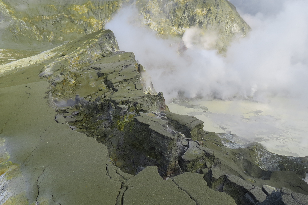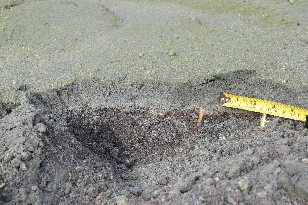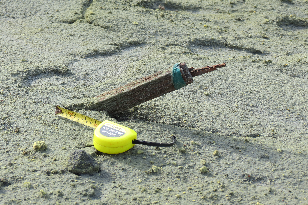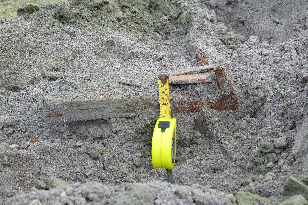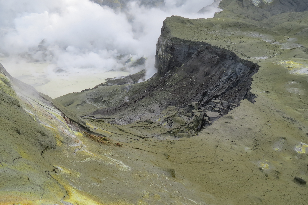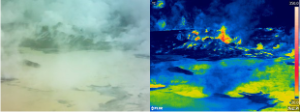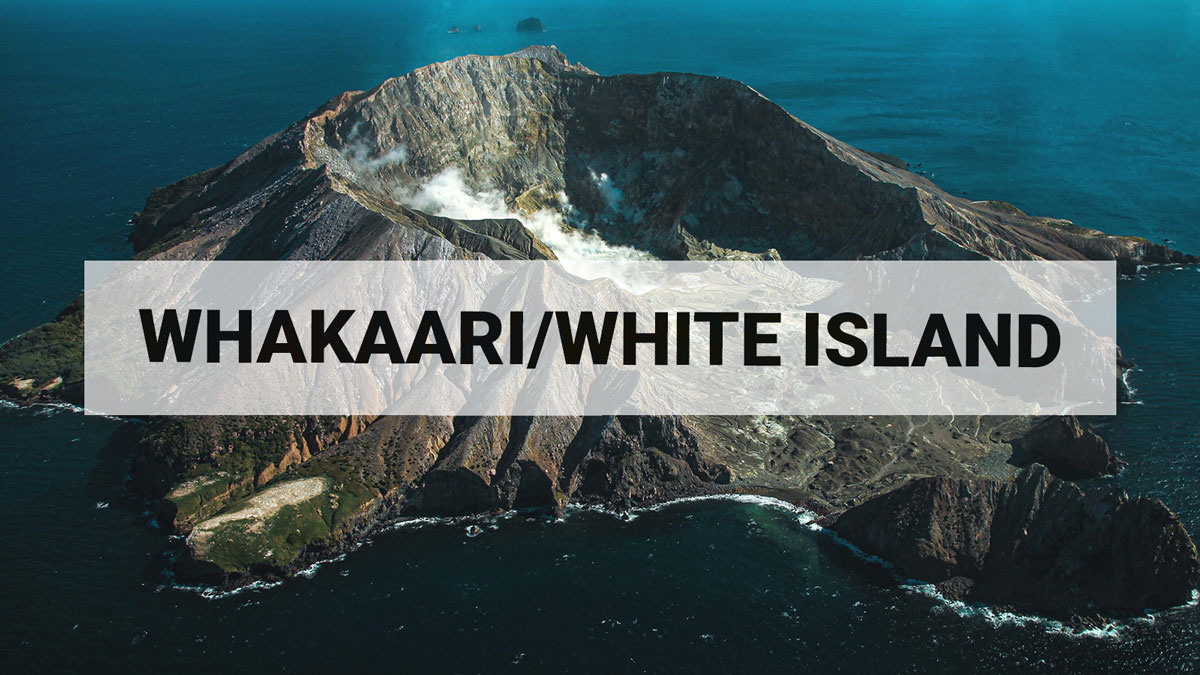
Volcanic unrest continues at Whakaari/White Island; details of April 27 eruption unraveling
The level of volcanic unrest at Whakaari/White Island declined following the eruption. Volcano seismic activity has decreased, while the gas output has been variable and is now at typical background levels. No further eruptions have occurred and the Volcanic Alert Level remains at Level 1.
GNS staff visited Whakaari/White Island last week to continue their evaluation of the eruption impacts, sample gases, collect thermal IR images and undertake maintenance of monitoring equipment affected by the eruption on April 27.
Thermal IR images have established very high temperatures are present on a mound in the back of the 1978/90 Crater. This is the same area where a dome grew in 2012. There are two areas of hot gas output and the temperatures ranged from 292 to 337 ºC. These are the highest temperatures we have measured since early 2014 when we measured 450 ºC in the same area. The April 27 eruption removed about 13-15 m of lake floor sediments and now a new lake is starting to form at this lower level on the floor of the crater; the temperature is 49 ºC. The temperature of Fumarole 0 (the largest accessible one) has increased from 178 to 188 ºC.
Observations during this visit of the eruption deposits confirm the explosive nature of the April 27 eruption and the complexity. The eruption did produce very energetic blasts and surges. In places it sheared off or broke survey pegs and markers at ground level. Typical of energetic blast and surge events, the deposit is not very thick, ranging from a few mm to 50 mm in thickness. Ballistic blocks were observed in several locations, suggesting more than one source for them. There is also a ‘wet’ surge deposit that is mainly made up of lake floor sediments (muds, sands and sulphur). It is starting to appear the eruption sequence was: the area around the former Donald Duck Crater collapsed and exploded, then the former lake and the sediments in its basin have been erupted forming the blast and surge deposits. This has lowered the lake floor at least 13 m. This was a very energetic phase with both surge and ballistic phases (some post surge). Following this there has been collapse of the 1978/90 Crater walls. Survivability during the eruption would most likely have been low in areas of the Main Crater floor.
The level of volcanic unrest at Whakaari/White Island declined quickly following the eruption on April 27. The Volcanic Alert level for White Island remains at Level 1. Aviation Colour Code remains Green. GNS Science volcanologists continue to closely monitor White Island through the GeoNet project.
Steve Sherburn Duty Volcanologist
